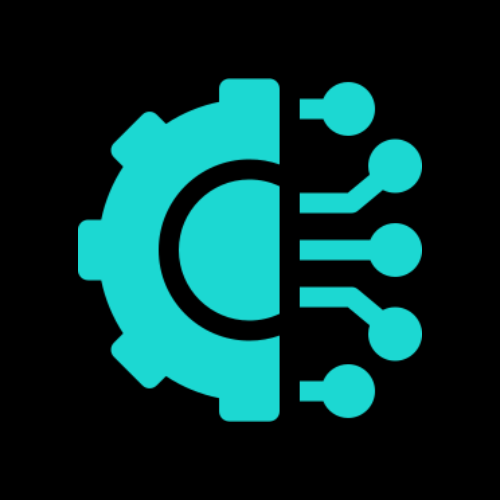Introduction
In today’s time, the demand for remote jobs is very high. People prefer remote jobs because of flexible working hours, commute-free life, and work-life balance. Employees get independence and the company also gets a chance to hire global talent. But getting a remote job is not simple. This job tool helps a lot. These tools optimize your job search and send you job alerts and highlight your profile in front of hiring managers. You can make your job search fast and smart with the help of these tools. If you search for remote jobs without job tools, then you might miss a lot of relevant opportunities. Searching manually is time-consuming, and you also get rejected because keywords don’t match. That’s why job tools have become a strong weapon for remote job hunting.
You can read the summary of this article here.
What is a job tool?
Before knowing which job tools are the best, it’s important to first understand what a job tool actually is.
A job tool is a platform, or website that connects candidates with employers.
These tools make the job search process easy and fast, providing candidates with the opportunity to apply for jobs that match their preferences.
Strategies for landing remote jobs are:
1. Choosing the Right Job Tools for Remote Jobs
Choosing the right job tool for finding remote jobs at the right stage of your career can make a huge difference. Why? Because the right job tool will show you the right opportunity — and every tool is designed to serve a specific purpose.
All job tools are useful — but their true impact is felt when used according to our needs. Your career is a journey, and choosing the right tool can be your fast-track ticket to success.
Every tool has its own unique features. You just need to find the best match based on your needs. Try 2–3 tools, then decide which one is the most helpful for you.
How to choose the best job tool?
Now you’ve understood what job tools are and why they are important. But how will you choose a good job tool?
How will you know which tool is the best for you?
Here are some points that will help you choose the right job tool for yourself.
Checking the features of tools –
You should always check for all the features that a job tool will provide. You should only use that job tool which have all these features
- Creating/optimizing a resume.
- Provide job suggestions based on your skills and requirements.
- Application tracking.
- Interview preparation
- Networking features
- Free or affordable plans.
Privacy and Security –
*Always share your data with trusted platforms and check if the site is secure or not. Be safe from a fake site.
Reviews and Ratings –
*Always read reviews and ratings of users before using the tool; with the help of ratings and reviews, you will get an idea of the effectiveness of the job tool.
Is it matching your career goal –
If you are searching for remote jobs, then you should use tools like Naukri.com, LinkedIn. This shows you remote jobs.
Try Free Versions First
*Most tools have free versions or trial periods. Test a few tools before committing to any paid plans to see which works best for you.
*Trying free versions helps you make a confident decision and ensures you’re investing in a tool that actually supports your career goals
2. Resume & Profile Optimization
The job tool notices all the keywords (like: “project management”, “Excel”, “content writing”) in the job description. And try to include all the keywords in your resume naturally, so that it can be easily shortlisted by ATS.
Keep the Format Simple
Avoid using complex layouts, tables, images, or fancy fonts. Stick to a clean, basic design with standard fonts like Arial, Calibri, or Roboto. Save your resume as a .docx or PDF file (if accepted).
Use Standard Headings
Use conventional headings such as:
Work Experience, Education, Skills, Certifications.
Avoid creative or unusual section titles that ATS might not recognize.
Avoid Graphics and Icons
ATS cannot read visual elements like logos, icons, charts, or images. Job tools keep your resume 100% text-based to ensure all content is scannable.
Include Both Hard and Soft Skills
Mention relevant hard skills (e.g., Excel, Python, SEO) as well as soft skills (e.g., leadership, teamwork, communication) that are aligned with the job.
Customize for Every Job
Never send the same resume everywhere. Tailor it for each job application by updating the summary, keywords, and skills to match the role.
You should use tools to create your resume easily. These tools will help you make an effective, impressive, and ATS-friendly resume. Make use of tools like: Jobscan, Teal, Rezi, Resume Worded
These help you compare your resume to job descriptions and improve your ATS score.
3. Job Alerts & Automation
Searching for jobs manually every day becomes tiring. But if you set job alerts, then you will directly get an email or notification of a relevant opening. Platforms like LinkedIn, Indeed, and Flex Jobs give you the option to create customized alerts. You can use filters based on role, location, industry, and keyword. With this, you will get only relevant opportunities, and your time will also be saved. Automation tools like Easy Apply AI sense automatic applications for multiple jobs.
It customizes your resume and cover letter according to the job role. You don’t have to fill out every application manually. It is useful especially for the candidate who applies for jobs regularly. There is another problem with job hands, and there is tracking. When you have applied for a job, the time of response and the schedule of the interview – tracking all this is difficult. With tools like Trello and Notion, you can keep yourself organized by creating a board. An Excel sheet is also a simple option where you can maintain all your data easily. From this, you will get clarity, and you will be able to do a follow-up promptly.
4. Networking
Networking is very important in job hunting because, with the help of networking, you can reach those opportunities that are sometimes unavailable on job portals. Many companies hire candidates internally or through referrals, which means that if you have a strong network, you will be aware of those jobs. You get real industry insight from networking, like which skills are in demand, what the company’s culture is, or what the expectations of a specific role are. When you interact with a professional, it also boosts your confidence and improves your communication skills. Which helps in your interview. Networking is not limited to jobs only – it can also be one way for your long-term career growth. If today you are having a small conversation with a professional person, no one knows, maybe the next day that person will be the reason for your big opportunity.
Tools to help with networking –
- LinkedIn
The first one is LinkedIn. It is a professional networking platform where people create their professional profiles to showcase their skills, experience, and achievements. This is the best platform for finding professional jobs. - Teal
Helps you organize your job search with a smart tracker, resume builder, and job recommendations. - Hunter.io
Great for finding professional email addresses of people you want to connect with (especially useful if they haven’t accepted your LinkedIn request). Helps you reach out via email with personalized messages. - Calendly
If someone agrees to talk, make scheduling easy! Use Calendly to share your availability and let them book a time that works. It saves back-and-forth messages and looks professional. - Notion
Create your own simple networking CRM (contact management system) to track who you’ve reached out to, when you followed up, and what the next step is. Staying organized shows you’re serious and professional.
5. Interview Preparation Tools
To prepare for the interview, we need to practice first. Tools provide you with a real-time interview environment where you can practice. Google’s interview warm-up provides frequently asked questions that are AI-based. By this, you get confidence and get a chance to prepare for answers. There are mostly video interviews for remote jobs. Tools like Vmock and HireVue analyze your body language and communication style. It gives you feedback to improve. From this, you can build your confidence and presentation. Tools like Grammarly and Quillbot improve your written communication. If you have to improve your English speaking, then apps like Elsa and Cambly are helpful. In a remote job, communication is a key skill, and if you are strong in this area, then it is easy for you to crack an interview.
6. Skill Development for Remote Jobs
Remote jobs are not just about job hunting, you also need to upgrade your skills. Platforms like Coursera and Udemy offer affordable and professional courses. Skillshare is perfect for creative professionals. From here, you can learn the latest tools and technologies and make your resume stronger.
An important aspect of remote jobs is collaboration. Companies use Slack, Asana, Notion, and Zoom so that teams can work smoothly together. If you already have knowledge of these tools, you become a strong candidate for recruiters.
Platforms like Google, HubSpot, and LinkedIn Learning provide certifications that increase your credibility. In remote jobs, recruiters can easily judge from your resume whether you have industry-relevant skills or not. Certifications become a trust factor for you.
7. Avoiding Scams of Remote Jobs
There is a risk associated with remote jobs and they are scams. To solve this problem, you can check reviews of the company on Glassdoor and Trustpilot. FlexJobs and remote.io provide verified job listings where the risk of scam is low. You should avoid jobs that ask for money, provide unrealistic salary packages, or communicate without an official email address. These are clear red flags for scam jobs. You get genuine job leads and advice from remote work forums on Reddit, from Linkjob groups, and from the Facebook remote work community. Here, members share their experiences from which you can easily identify the difference between a scam job and a genuine job.
8. Time Zone & Productivity Tools
The biggest challenge of a remote job is time zone management. If your company is in the US and you are working in India, adjusting the time for the meeting will be tough. Tools like World Time Buddy and Calendar help you manage time zone differences. Self-discipline is very important in a remote job. Time-checking tools like Toggl and Clockify help you measure your daily productivity. Task management apps like Todoist support you in being organised. To increase the productivity of remote team collaboration, you should keep transparent communication with the team. You can create a proper channel on Slack, maintain shared docs in Notion, and keep regular check-ins on Zoom. This hack makes you a reliable remote control.
9. Measuring Your Progress
Remote job hunting can be a long process. You have to measure your progress. You can record when you have applied for the job and the date of response using an Excel sheet or Trello boards. It gives clarity on where your efforts are actually working. Many tools provide you with analytics in which you can see how many times someone has viewed your resume, which keywords are working, and what the response rate of your application is. You can improve your strategy by analyzing the data. If you are not getting any responses continuously then it means you have to change your approach. Add new keywords in your resume, update your LinkedIn profile, or explore a new job board. Flexibility and adaptability are the keys to long-term success.
Conclusion
The demand for remote jobs is increasing every day, but so is the competition. If you blindly keep searching without using tools, you may face rejection and frustration. But if you smartly use job tools – optimize your resume, set up job alerts, focus on networking, and upgrade your skills – your chances of success increase multiple times. Remember, a job hunt is a marathon, not a sprint. Tools help you fast-forward the process and make you stand out in front of recruiters. That’s why, by following these strategies, you will definitely be able to grab your dream remote job.
To know more about remote jobs, read this article – “Pros and Cons of Remote Jobs.”







Leave a Reply